The cost of preserving Nepal’s past
An archaeological site displaces communities in the district in which the Buddha was bornRajkumar Yadav is a community activist and tour guide in Shivgarh, a small village situated by the western gateway of Tilaurakot, the ancient city of Kapilvastu.
The village appears in early sketches of P C Mukherjee, the Bengali archaeologist who first excavated Tilaurakot in 1899 -- a reminder that the village has been part of this landscape for at least over a century.
Just 15km to the west of the birthplace of the Buddha in Lumbini is the less visited Tilaurakot, the archaeological site widely believed to be the former palace of the Shakya kingdom into which Siddhartha Gautam was born and raised.
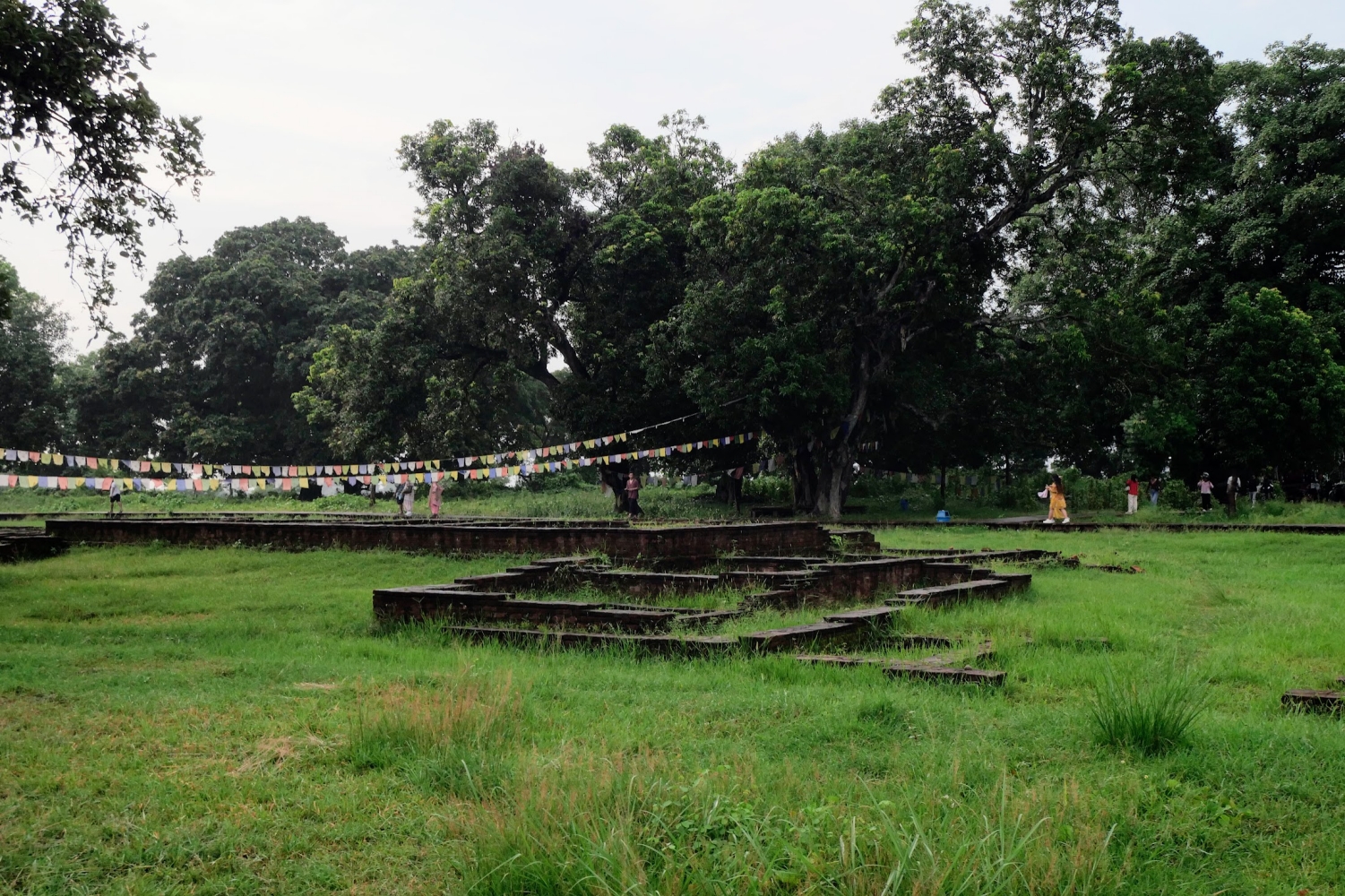
Several rounds of excavations and research have found artefacts, some of which are on display at the Kapilvastu Museum. Despite its cultural, religious and historical importance, Tilaurakot has remained on UNESCO’s tentative list for World Heritage nomination since 1996, in the absence of diplomatic support needed for full recognition.
The Department of Archaeology’s geophysical survey mapping and excavation work was initiated in 2013 with sponsorship from the Japanese-Funds-in-Trust. It revealed more ruins near Tilaurakot, around Shivgarh -- remains of monasteries, stupas, ponds, and an industrial zone outside of the current compound of Tilaurakot.
Officials hope to unearth more of the ruins of the ancient Shakya Kingdom. Ram Bahadur Kunwar of the Department of Archaeology in Kathmandu says the intention is to preserve existing ruins and create tourism facilities.

LOST HOMES
But the expansion comes at a human cost. Archaeological work has meant losing homes and fracturing the social ties that have bound the Shivgarh community for generations. The government planned a phased land acquisition outside the palace’s western gate in early 2025.
Though a formal notice was issued last year by the Department of Archaeology, residents had been informally warned for years. Previous evictions cleared most of the village, with families resettling nearby, leaving piles of brick and cement where homes once stood.
Another round of evictions is imminent in the coming days or weeks. Electricity has already been cut to remaining houses, and even the few homes still standing on the western edge are expected to be demolished soon. By the end of 2025, Shivgarh is likely to disappear entirely, a stark scene in a place tied to Buddhism and the legacy of Kapilvastu.
Shivgarh’s plight mirrors earlier displacements in the region. Eight villages in Lumbini were relocated during the Master Plan, documented in a 2005 ethnography by Kate Molesworth and Ulrike Müller-Böcker: homes were demolished, electricity cut, compensation fell short, and the poorest residents, often those with the smallest landholdings, were pushed into landlessness.
The anger and disillusionment felt toward the Lumbini Development Trust (LDT) and opaque, top-down decision-making processes they describe are strikingly similar to what residents of Tilaurakot express today. The demolitions in Shivgarh are therefore not simply about land acquisition for heritage, they are part of a broader pattern where the language of preservation obscures the displacement of marginalised communities.
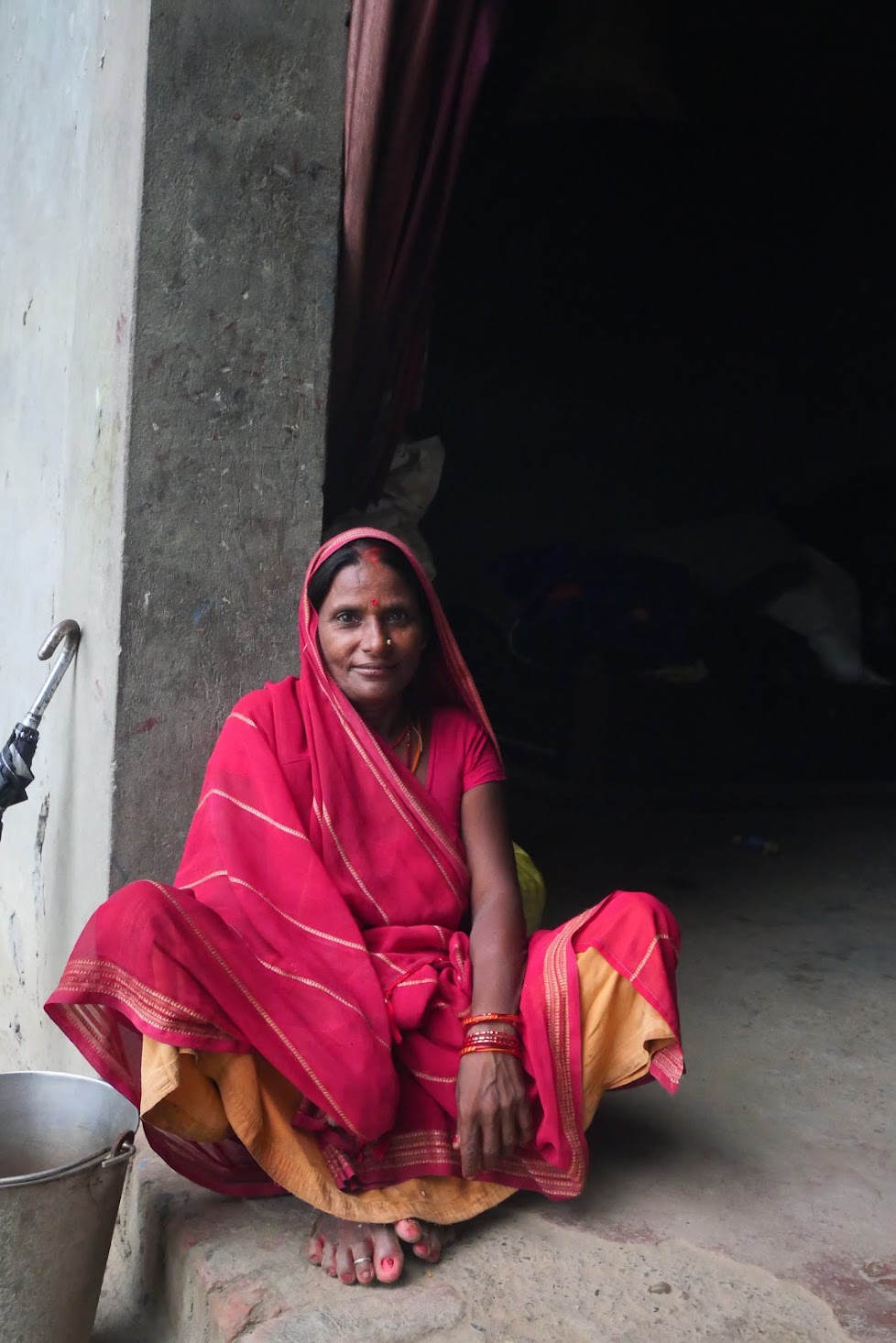
It is a rainy late afternoon when I return to Shivgarh to speak with residents, days from another round of evictions. The humid air hangs heavy, and rain pools in the rutted paths.
Rajkumar Yadav’s wife, brother, three children, sister, and mother have gathered in his home.
The family has lived in Shivgarh for five generations. Rajkumar and his brother work as tour guides, following in the footsteps of their father, Ram Nath Yadav, who spent 40 years with the LDT, and Tilaurakot first as a security guard and then a tour guide. Before this house, the Yadavs were part of a 50-person joint family that split into multiple households; two have already been evicted.
Rajkumar’s family has roughly ten days before they must leave, though the rains may buy them extra time. Their new home, a few kilometres away, is only partially built. The state compensation falls far short of rebuilding costs, and Rajkumar explains that plots are undervalued, with a 10% depreciation and a 5% profit tax applied even on the payout.
“We have sacrificed,” he says, “and still we have to pay tax on what little we get.”
There is also no proof of payment he or his fellow community members have received for the profit tax, he adds, noting that while compensation ranges from Rs700,000 to Rs1.8 million near the highway, constructing a new home now costs up to Rs2.5-3 million.
Community voices
Rajkumar and I walk through Shivgarh, once a roughly 35-home settlement, now down to around eight. Each story of residents still facing imminent eviction reveals the human toll behind the statistics and plans of the authorities.
Some former neighbours have moved nearby, while a few have gone as far away as Kathmandu. Many struggle to rebuild homes or cover medical bills. One resident has rebuilt a home but it still has no doors or windows, and says he is forced to choose between completing the house or paying for his children’s education.
Others must go abroad to find work pushed further into poverty by displacement. Most of the people who remain in Shivargh are Dalit, others have a Muslim background. They are land-poor, poor in general, and hard hit by the displacement.
Those who received compensation first and those with more assets have been able to acquire land and make the move. Families are scattering, unravelling the dense web of social and familial ties that has bound the community for generations.
One community member explains that several households that had gone abroad for seasonal migration, or left the village for extended periods faced particular difficulties. In some cases, their land had even been confiscated in their absence, with no compensation provided upon return.
Although there is a legal provision to claim missed compensation, doing so requires documentation from the local authorities. This process is burdensome and according to an anonymous source, only a few people in the community have successfully done so.
In the downpour, I met Mehni Hasan Mina, an elderly Muslim man living nearby. He lives with his grandchildren and children. His son drives an auto-rickshaw, and Mehni himself once pedalled a cycle rickshaw.
“I feel pain in my chest,” he says, voice cracking. “The village where we all lived together is gone now.”
His new home is unfinished, he struggles to pay for its construction. His house sits between the ruins of two larger family homes, now piles of rubble.
The day before, a construction contractor came to persuade Mehni to leave.
Instead, Mehni bargained for time, explaining that his daughter had just given birth and was in the hospital. It is a temporary reprieve; eviction looms.
Down the lane, four teenage girls huddled under a large umbrella. We spoke as the rain poured down around us. Their new home, still under construction, has no electricity or paved roads and is far from inhabitable. One girl took me to her home, a dilapidated brick building with a tin roof.
Her mother, Janiki Pasi, points out gaping holes in the walls. The bricks have been salvaged for the new home because they cannot afford new materials.
They received only Rs 700,000 from the government. For now, the family of five sleeps in one room, two beds outside are only covered by tin and mosquito nets. Strong wind would strip them bare. The electricity to their home was cut a month ago, leaving them afraid of snakes and the dark.
Her husband, Ram Brish Pasi joins our conversation: “We are lucky to be born here, but we are now falling back into an older age.”
Yadav adds: “The village had electricity, a good road, clean water. Now we have nothing. At night, the children can’t study.” The electricity cuts to these houses soon to be evicted were deliberate, he said, and made without warning.
The home of Ram Rati Pasi, a 90-year-old and long time inhabitant of Shivgarh, is dark. It is lit only by a phone flashlight. She sits on the ground surrounded by grandchildren, daughters and daughters-in-law. At least ten people live in her 100-year-old mud home, which Yadav argues should also be protected for its heritage value.
“I wish I could die here,” she says. Floods long ago took most of her land, the new plot her family acquired is inundated in the monsoon. Her family received Rs 1.8 million in three installments. Given their poverty, a significant portion went toward medical expenses and education, leaving little for house-construction.
“The government is neglecting us,” Ram Rati Pasi says. “How can we move from this place?”
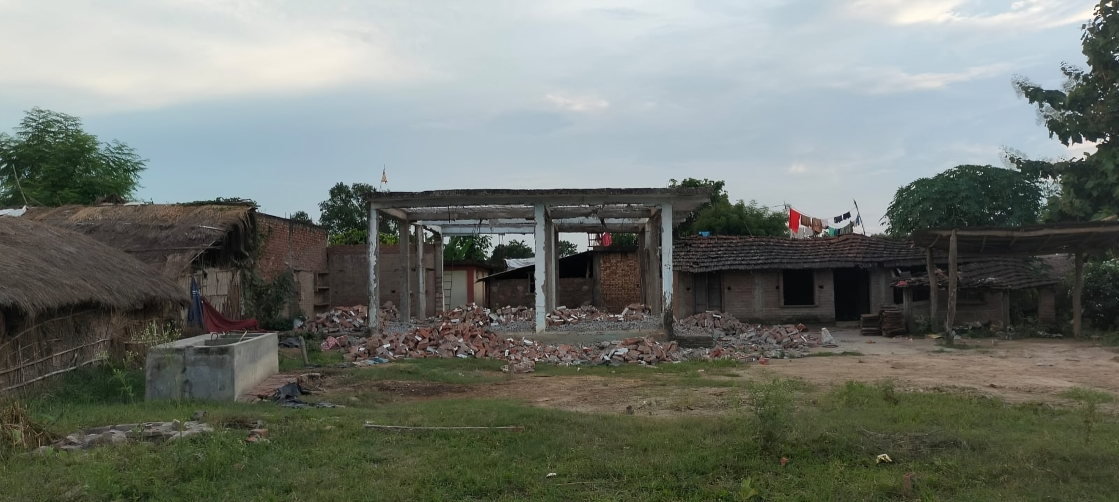
'Small community'
In a shop at the northern edge of the village are shopkeeper Rita Bhandari, her father Nandaram and two other men, Suresh Yadav and Mukesh Paswan. The shop light illuminated our conversation, the electricity cuts to the community have not yet affected the shop.
As the humid evening set in, our conversation took on the rhythm of a focus group. “We have to live like we are landless,” says Rita, who plans to stay until the end because of her shop. She adds that the family will likely have to move far away. Her own family remains to manage the shop.
Officials from the LDT had first encouraged her to open this shop for tourists, providing a place for food and refreshment and maintained an information kiosk counter right next to it. Residents clarified that the government-owned kiosk was the first building demolished before the community structures as a show of symbolic participation from LDT.
She explained that for those with larger landholdings, relocation has been less disruptive, but for families with little land, the blow is devastating. Families are not compensated for the fruit trees on their land when it is confiscated.
Rita’s Hindu family values its own culture, but respects Buddhism as well. “The government has broken our connection with Tilaurakot, and undermined our feeling of belonging,” she says.
Suresh Yadav adds: “We all have our own stress. We have to move to a different place, but we used to live well together. We don’t know what kind of place or people we will encounter.” He paused, voice low, then adds, “You don’t see our tears, but we are crying inside.”
The others nod in agreement. Born and raised in Shivgarh, Suresh has not yet built a home, the rain and electricity cuts make construction impossible.
“The children are afraid of the dark and of snakes. At night, they sit in candlelight,” he says. He anticipates relocating in the next one to two months.
When asked if they had aired their grievances to the Department of Archaeology, Mukesh Paswan replies, “We don’t say anything to them.” Rajkumar Yadav had repeatedly advocated for the community, appealing to numerous officials, including those at the Department of Archaeology, but the community’s voice was largely ignored and their concerns went unheard.
“For the government, a small community is just a small community,” Rajkumar says.
Mukesh says achieving World Heritage Site status is essential for better protection, adding that the government neglects Tilaurakot: “If Nepal’s diplomacy were stronger, this site could bring more tourism and income for locals.”
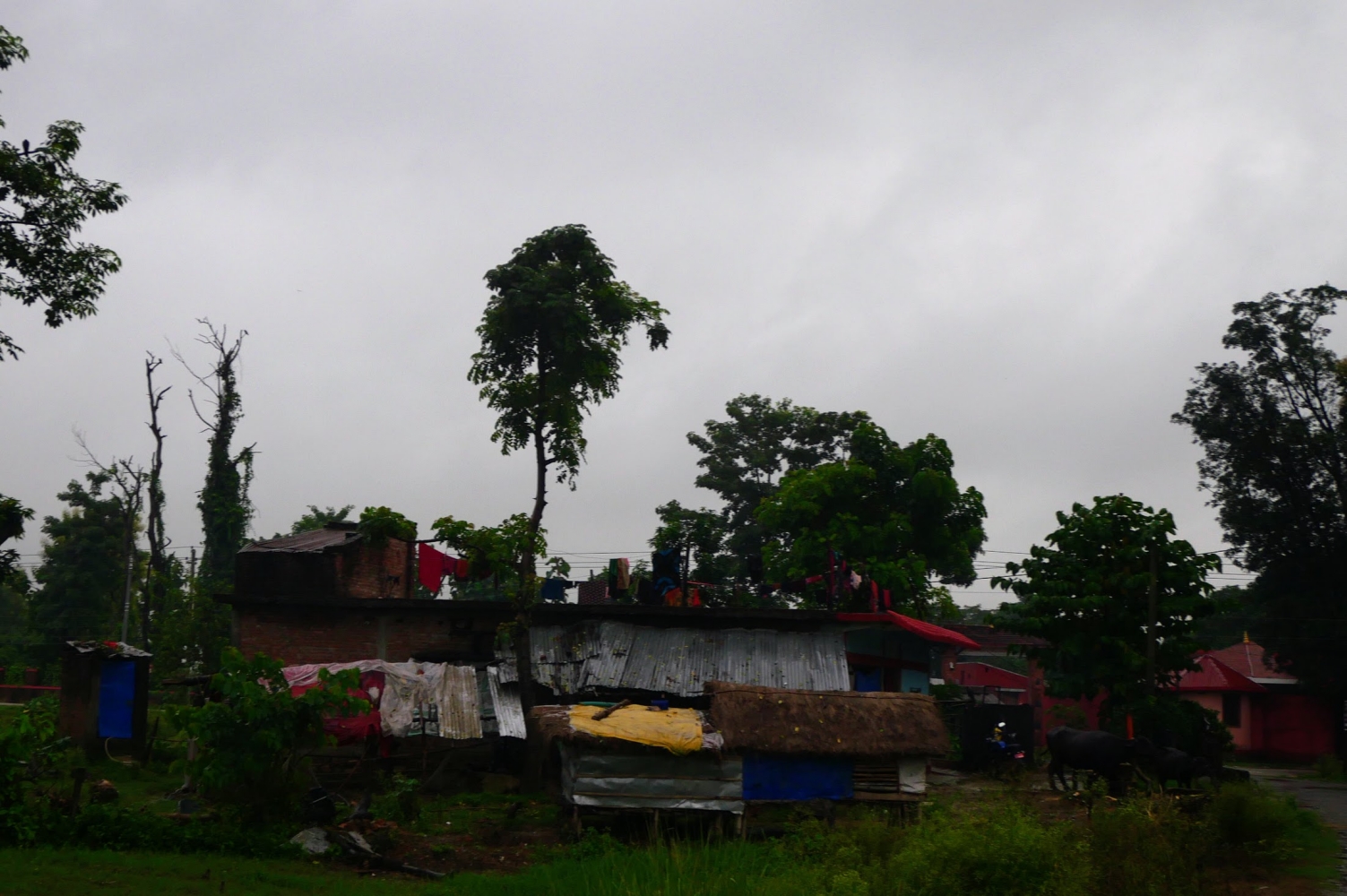
Rajkumar says heritage conservation must involve local communities before international or national priorities are considered, highlighting neglect from top-down decision-making: “Without local people, how can any tourism here be sustainable?”
Suresh’s frustration with local authorities is even sharper: “The mayor should be jailed for not doing anything to protect the community or preserve the site.”
Everyone fears that outsiders, “people from Kathmandu,” will take over their land and run businesses where their homes once stood. Suresh believes Parliament knows little of the displacement here, and legislators would be outraged once they found out.
As night sets over Kapilvastu, Shivgarh is half-empty, its remaining homes framed by rubble and rain-soaked paths. At Rajkumar’s home, we share a meal and speak of Buddhism and hope for the future.
Rajkumar hopes to use his NGO, Lotus Sutra, to train locals in tour guiding, Buddhist awareness, and skills for youth and women to support their livelihoods. His brother dreams of working abroad to support his family, a sacrifice he outlines in the shadow of the palace where Siddhartha once left his own wife and newborn son.
The stakes of heritage preservation are becoming strikingly clear: neglect is not only a practical issue but a structural one, rooted in the top-down systems of governance that marginalise those living closest to the sites they are meant to protect. The poorest suffer most from relocation. The irony is stark: the birthplace of the Buddha’s renunciation has become the site of a different departure, a forced eviction into uncertainty.
The spokesperson for the Department of Archaeology in Kathmandu, Ram Bahadur Kunwar, was the official overseeing Tilaurakot for over a decade. He defended the government’s approach: “We have been giving compensation with justice, we gave good money for the land. If I lived there, I would also want a lot of money from the government, but what we gave was fair.”
Kunwar rejected the idea that families have been shortchanged. “I don’t think the compensation is too little. In fact, when people buy new land with the money, they manage to buy more land than before and build better homes.” He says residents were given years of notice, with formal eviction orders in 2024. “They had time to figure out their next plans.”
When pressed about depreciation deductions and the 5% profit tax, which residents say was never properly documented, he maintained that all receipts had already been sent.
Kunwar outlined the DoA’s broader vision: acquiring land around Tilaurakot to strengthen its candidacy for UNESCO World Heritage status. A Master Plan, he explained, will include a bus park by the museum and a pedestrian route to the site. The aim, he said, is to “uplift the community” through tourism, including local guide and crafts training. But residents dispute that such programs have reached their community.
The Taiwanese Buddhist organisation Tzu Chi once worked with Rajkumar on a village resettlement plan to preserve community cohesion and provide services, documenting the village before eviction. According to Rajkumar and Tzu Chi, the proposal was rejected by the LDT andthe Department of Archaeology.
Rajkumar believes officials didn’t want to admit they were failing the community; some villagers suspected corruption. However, when prompted about the work of Tzu Chi for the preservation of Shivgarh, Kunwar was dismissive: “There was no plan like that. I don’t think I saw such a plan.”
It appear that since local inhabitants have accepted compensation, there is nothing more for officials to do or say. They feel their responsibility has been discharged. Yet, many of those displaced were already among the poorest, least-protected families in Kapilvastu, ill-served by the state long before the bulldozers arrived.
The failure rests with state officials, who have prioritised revenue and tourism over the welfare of local residents. Had relocation genuinely improved housing and living conditions, frustration toward the authorities, and the desperation would likely have been far less.
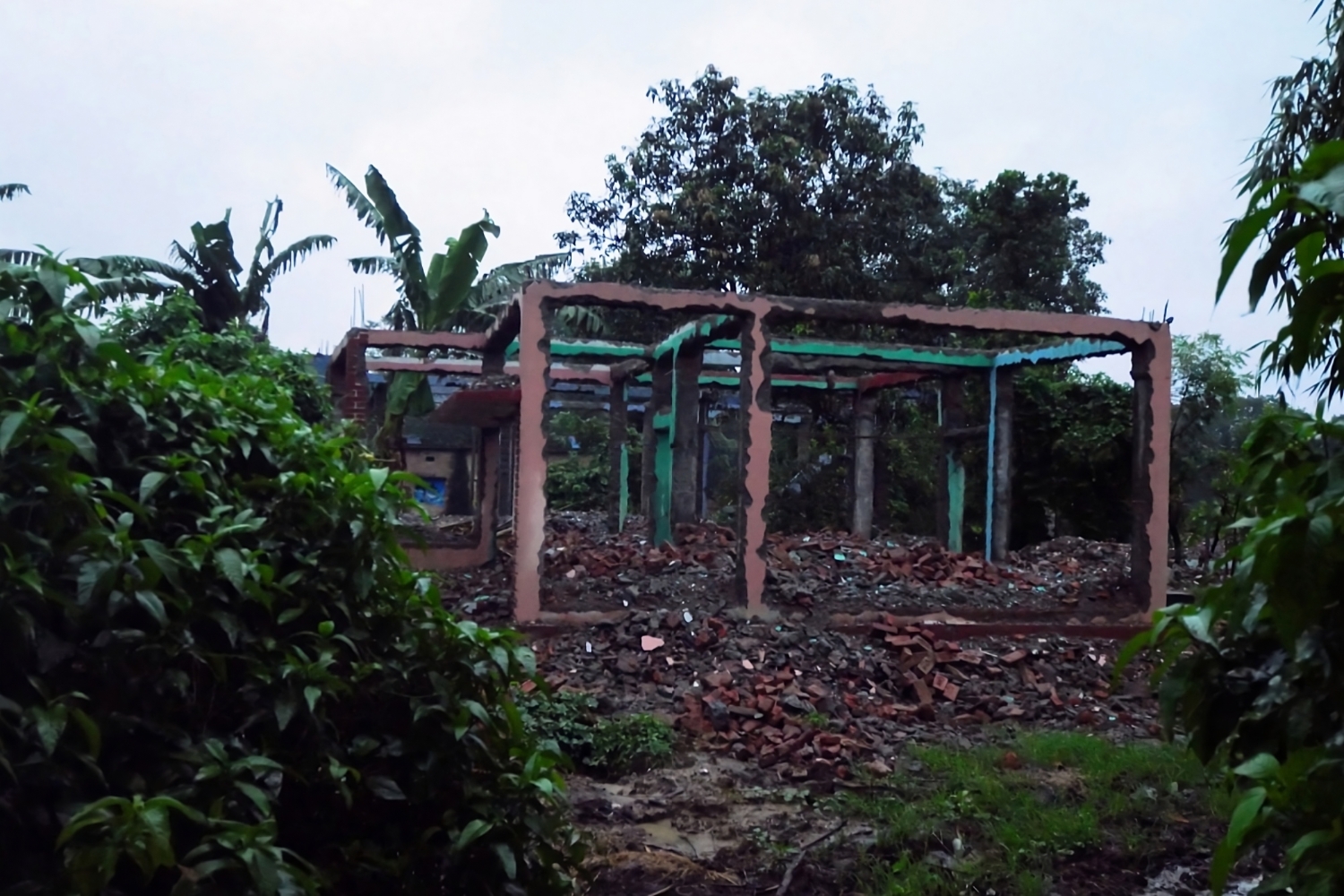
Healing
In Kapilvastu under the expansive evening sky, I sit with Rajkumar and Ram Achal Yadav and other founding members of the Lotus Sutra. We gather at the site where the foundation has just been laid for a meditation centre.
They proudly show me the site and share their vision to build a guesthouse, the Zen Heritage House, as a place to anchor spiritual connection for the local community. Lotus Sutra’s executive director Ram Achal Yadav is a scholar of Buddhist studies and a community leader committed to preserving not only the site’s tangible ruins, but also its intangible heritage of belonging.
Through Lotus Sutra, he and others are working to link heritage preservation with skill training, livelihoods, and cultural projects, aiming to ensure that the community remains connected to Tilaurakot even if their physical homes are gone.
Ram Achal Yadav together with Rajkumar has applied for funding to launch a project combining heritage conservation with livelihood development for 25 local women and youth.
“To heal the trauma of relocation,” Ram Achal says, “we must use spirituality for the common good.”
While Tilaurakot and Lumbini are celebrated globally as sites of Buddhist heritage, the surrounding communities are overwhelmingly Hindu and Muslim, with only a small Buddhist minority. Yadav’s aim is to grow the community’s awareness and participation in heritage promotion and preservation.
“It’s our shared history here,” he says, “whether Hindu, Muslim, or Buddhist. Everyone here is part of this heritage.”
But as state and international actors work to restore Tilaurakot’s palace ruins, the living heritage of Shivgarh is quietly disappearing. If communities like Shivgarh are sidelined, the legacy of Kapilvastu may be remembered not for its heritage, but for the lives displaced to protect it.




